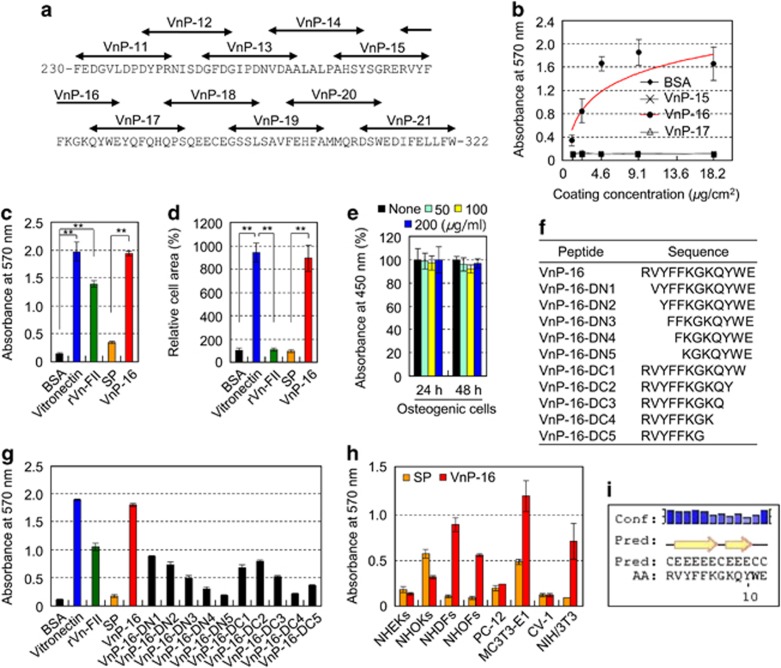Figure 2.
VnP-16 promotes cell behavior in fibroblast lineages. (a) The locations of the synthetic peptides (VnP-11 to VnP-21) in the amino acid sequence of the central region of human vitronectin (residues 230–322). (b) Dose-dependent cell attachment to immobilized synthetic peptides. Human osteogenic cells were allowed to adhere to peptide-treated plates for 1 h in serum-free medium. (c and d) Cell attachment (c) and spreading (d) of osteogenic cells induced by treatment with BSA (1%), vitronectin (0.23 μg/cm2), rVn-FII (5.7 μg/cm2), or the synthetic peptides (9.1 μg/cm2) for 1 h (c) or 3 h (d) in serum-free medium. (e) The viabilities of osteogenic cells treated with VnP-16 for 24 or 48 h. (f) The amino acid sequence of N- and C-terminal truncated peptides for VnP-16. (g) Attachment of osteogenic cells induced by vitronectin, rVn-FII, and peptides. (h) Attachment of NHEKs, NHOKs, NHDFs, NHOFs, PC-12 cells, MC3T3-E1 cells, CV-1 cells, and NIH/3T3 cells to VnP-16 (9.1 μg/cm2). The cells were allowed to adhere to VnP-16-treated plates for 1 h in serum-free medium. (i) The predicted structure of the VnP-16 dodecapeptide computed using the PSIPRED protein structure prediction server. The positions of the two β-strands (yellow arrows) on the coil (black line) are indicated. Conf, confidence of prediction; Pred, predicted secondary structure; AA, target sequence. Data in (b–e,g,h) represent the mean±SD (n=4). **P<0.01

